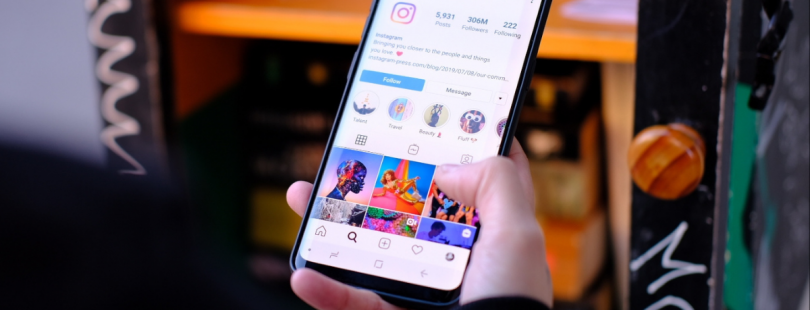A good email can get you conversions and gain your client a lifelong, loyal following. A good email that sits in your subscribers’ inbox unopened, however? That’ll get you nothing except a call with your clients where they ask “why aren’t these emails doing anything?”
You need those suckers opened if you want to have any effect on your target audience. Luckily, whether an email is left unread is only partially up to fate. There are more than a few variables that crafty marketers have total control over.
Be thorough, but also make it snappy
Is that a contradiction? Yes. Is that also the best advice for increasing your clickthrough rate? Also yes.
The optimal subject line length for an email is about 41 characters or 6 to 10 words. So you have enough space to set up a good mystery that opening your email will solve, but not enough to waste a character.
So, what’s the best advice for making your subject lines short, sweet, and profitable? Here are a few things to consider.
Yes, the use of emojis anywhere is a controversial, hot-button issue here in the digital marketing world, but the facts are these: people respond to them and they save space.
Secondly—capitalization might actually play a huge role in whether or not someone opens your email. Title case? Make everything lower case? We suggest some A/B testing to get to the bottom of this conundrum.
Add value to your customer’s lives
There are a lot of things that could be preventing your audience from opening your emails. Don’t let it be the one thing you have total control over: the content.
It’s super easy to lose your customers’ attention when it comes to emails. You don’t even have to be thirsty or annoying—you just have to be uninteresting. And it only takes one lackluster newsletter to lose a reader.
Always ensure that your emails are adding value to your readers’ lives. Always pay off the promise of your subject lines. Here are some easy ways to make sure all of your emails are valuable:
- Share an engaging, informative, and relatable article…and be sure to share your commentary on it. They can go look up an article anywhere. Readers are subscribed to your email list because they want to hear from you.
- Even better: write an engaging, informative, and relevant article yourself. Why boost similar content when you could boost your own and help cement your reputation as a person your audience should listen to?
- Take note of popular items (on a personalized basis, more on that later) and let your customers know when that item is back in stock or on sale.
- Giveth to receiveth. Offer up birthday coupons, anniversary coupons, occasional free-shipping offers, or BOGOs. You know what will make someone open an email at lightspeed? Free stuff.
Be sure to welcome your new readers
Your most recent sign-ups are the people most likely to open your emails, so don’t be afraid to double and triple dip early on. In addition to sending newsletters or coupon codes, make sure that upon signing up, your audience is enrolled in a welcome sequence.
Common sense might say that you should cater your efforts towards the people who’ve been subscribed to you the longest. Sounds right, but alas: incorrect. Just because someone has been subscribed to your emails for a long time does not make them a valuable customer. Think about it—someone who’s been lounging on your email list has already decided not to buy from you. Or else they would have done it already.
Every email is either a soft or hard pitch to—in impolite, but honest terms—get your customers money. When you pop up in your customers’ inbox right after sign-up with a welcome sequence, you’re warming up your pitch to decrease conversion time. And guess what: it works!
Personalize your emails
Honestly, a lot of people just like attention. Humans have a Pavlovian response to seeing their name—they want to interact with something that’s calling them out directly. In short, always include your reader’s names. Every major email marketing platform will include first name personalization, it’s the baby steps of making custom, engaging emails.
Other important details to personalize are the locations and time zones of specific readers. Here’s the situation—if you send out your emails to everyone on your list at noon your time, some people might receive it at 3am, others at 9pm. Neither of these times are optimal for checking one’s email. So what will happen is when your readers check their email at 8 or 9 in the morning, your email will be just one in a long stack.
BustedTees increased their email revenue by almost 10% just by taking time to geographically plan out their sending patterns. I highly recommend reading this case study if you need more motivation to do the same.
Segment your email lists
Segmented and targeted emails generate 58% of all revenue.
Ergo, if you’re engaging in email marketing, you need to be segmenting your email lists. The more closely targeted your emails are, the more likely people will be to click them. There are many ways to segment your email campaigns—a few simple updates to a generic email may be all it takes to increase open rates.
The ways you can segment your email list are virtually endless. You can segment by role or job title, your customer’s stage in the sales cycle, the size of their company, the average value of their order, and how long they’ve been on the email list.
What can this do for your readers? Here’s a hypothetical. If you were an airline, you could segment your subscribers by location and keep them constantly updated on the best flight deals from your airline. The possibilities are endless. What are some additional ways you can think of to segment your subscribers?
Read More















